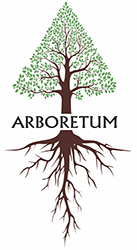Crimean pine
Crimean pine is a widespread coniferous plant, easily adapts to different types of soil, and lives up to 500-600 years. Frost resistance of the Crimean Pine below the Common Pine. It grows well on a wide variety of soils, although it prefers calcareous. It grows very slowly. Well tolerated transplant under the age of 5 years. In more adult age, it is necessary to replant with a big lump of the earth...
Crimean pine is a widespread coniferous plant, easily adapts to different types of soil, and lives up to 500-600 years.
Frost resistance of the Crimean Pine below the Common Pine. It grows well on a wide variety of soils, although it prefers calcareous. It grows very slowly. Well tolerated transplant under the age of 5 years. In more adult age, it is necessary to replant with a big lump of the earth. The first 2-3 years after transplantation requires care. Adults, rooted trees, are completely independent.
The birthplace of Crimean Pine, also known as Pine Pallas Pine (Pinus Pallasiana), is the peninsula of Crimea and the North Caucasus. The classification refers it to the subspecies of Black Pine (Pinus Nigra). 300 years ago, it covered most of the Crimea peninsula. Pine forests were actively cut down for the construction of the wooden fleet of the Russian Empire, to free up areas for gardens and agriculture. Listed in the Red Book of Ukraine and the Russian Federation.
Pine Crimean gives a high even trunk only with growth in the group, in the forests. Because it can not be cut down, wood is not used now. But very useful walks in the pine forests, the air which has healing properties for the respiratory tract. In medicine, needles, resin and cones are used.
Pine can be attributed to secondary honey plants. The benefit to the hive from it will be only if the tree grows in the vicinity of other, more powerful honey plants. But, Pine is a good pollen. Her bee pollen fill the cells of pollen. Also bees extract honey due to honey dew, which is distinguished by Pine needles. This honey smells good, has a dark color, thick texture and a slight taste of pine needles. He is also considered therapeutic. From the resin of conifers, bees collect propolis, which is highly bactericidal.
The decorativeness of Crimean Pine is widely valued in gardening, also because the tree shows high resistance to the gassed environment of cities. It grows slowly, so it can be used in limited areas. High versatility allows you to plant it on direct ground, where it gives a uniform, spreading crown, and on slopes and even on the rocks.
The root system of the Pine tree changes its structure, depending on the type of soil on which the plant develops. It can take the rod prominently with a strong central root on fresh, well-drained soils; powerful lateral roots will be on dry soils where the groundwater is too deep; in swamps and waterlogged soils, the root system will have short roots with small branches.
On our website you can purchase saplings of Crimean Pine of different ages with the Protected Root System and dug from the nursery; as well as, always fresh seeds, for self-germination.


